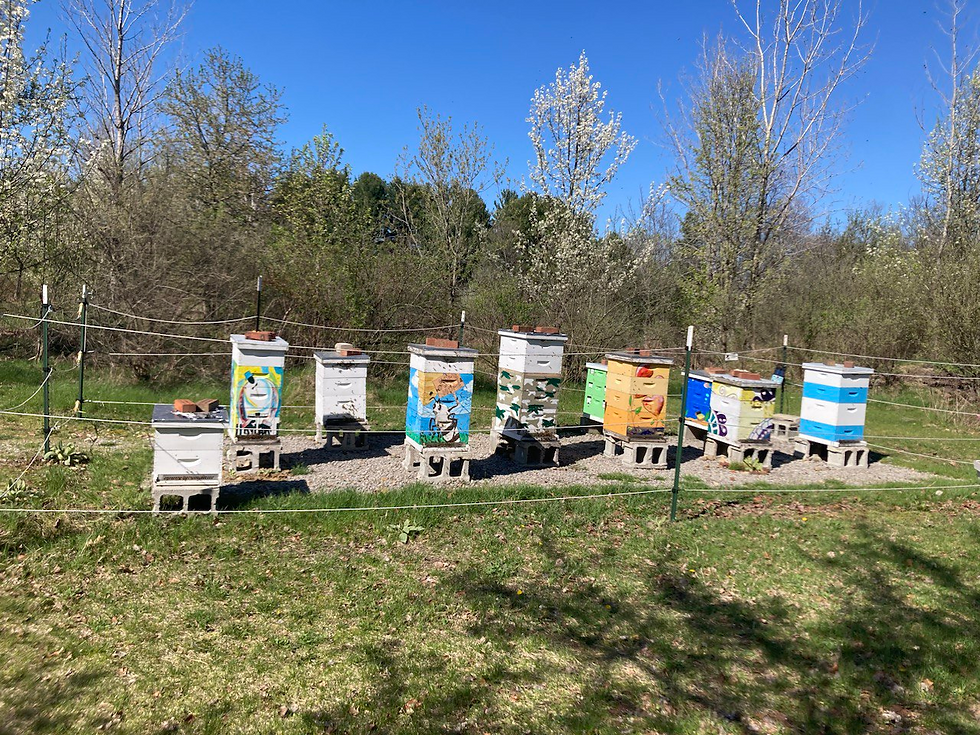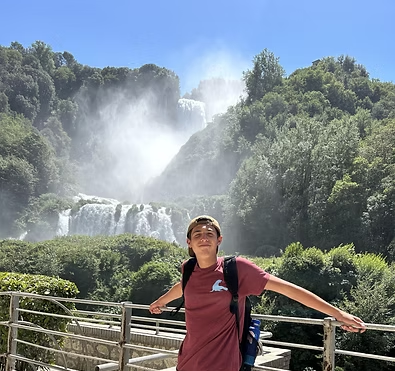Matt's Research Project: Color Theory
- vankirkmt20
- May 1, 2024
- 2 min read
Over the past 9 months, I have been working on a research project for the GCC Bee Project. It is centered on color theory and how it plays a vital role in a honeybee’s life. Other than smell and the use of pheromones, color is one of the most important factors in helping a honeybee understand the world around. It assists them in identifying their home, forage, predators, and more.
For my project, I was tasked with painting three different sets of bee hives. Some hives in the bee yard had already been painted by a previous student, but there were three white, unpainted hives that would be added to the yard in the spring of 2024. There are two main reasons why beekeepers paint their hives. The first reason is to prevent the drifting of bees between colonies. Honeybees can tend to drift in and out of different hives which can increase the transmission of diseases between hives. Painting the hives allows the bees to recognize their specific home rather than trying to find it amongst a yard of white boxes. The second reason is aesthetics. Beekeepers paint their hives to make their bee yard pleasing to the human eye.
Because of my liking for art, I immediately began looking for designs. However, after doing some online research of my own I found out that there were a few things that needed to be considered. The color black alarms honeybees because most of their predators, such as skunks, raccoons, and bears, have black fur. Honeybees cannot perceive red, so it comes across as black which also alarms them. Secondly, hive temperature is very important. Bees have a fanning process to maintain a certain temperature of the hive. Choosing lighter covers over darker colors will aid bees in keeping their hives cool during warmer months as lighter colors do not absorb as much heat.
After these considerations, I began the painting process. The hives I painted had been used in previous seasons, so there was some preparation that needed to be done before starting. Wax, propolis (a substance bees collect from trees and plants to repair the hive and seal cracks), and honey had to be scraped off the hives to create a clean painting surface. Wood imperfections were also smoothed to ease the painting process. After this, designs were penciled on the boxes and then painted with joy.
The hives were successfully painted and added to the bee yard on April 14th, 2024. They were given the names High Rise, Under the Sea, and Winnie the Pooh. This research project can be continued in a few ways. Future research includes counting varroa mites in the new boxes and comparing them to past seasons, analyzing pollen and nectar samples from honey to see which color flowers attracted the most bees, and measuring the outside and inside temperatures of the hives to see if different shades affect the cooling/fanning process of the hive. All in all, if you own beehives I would highly recommend painting them!








Comments